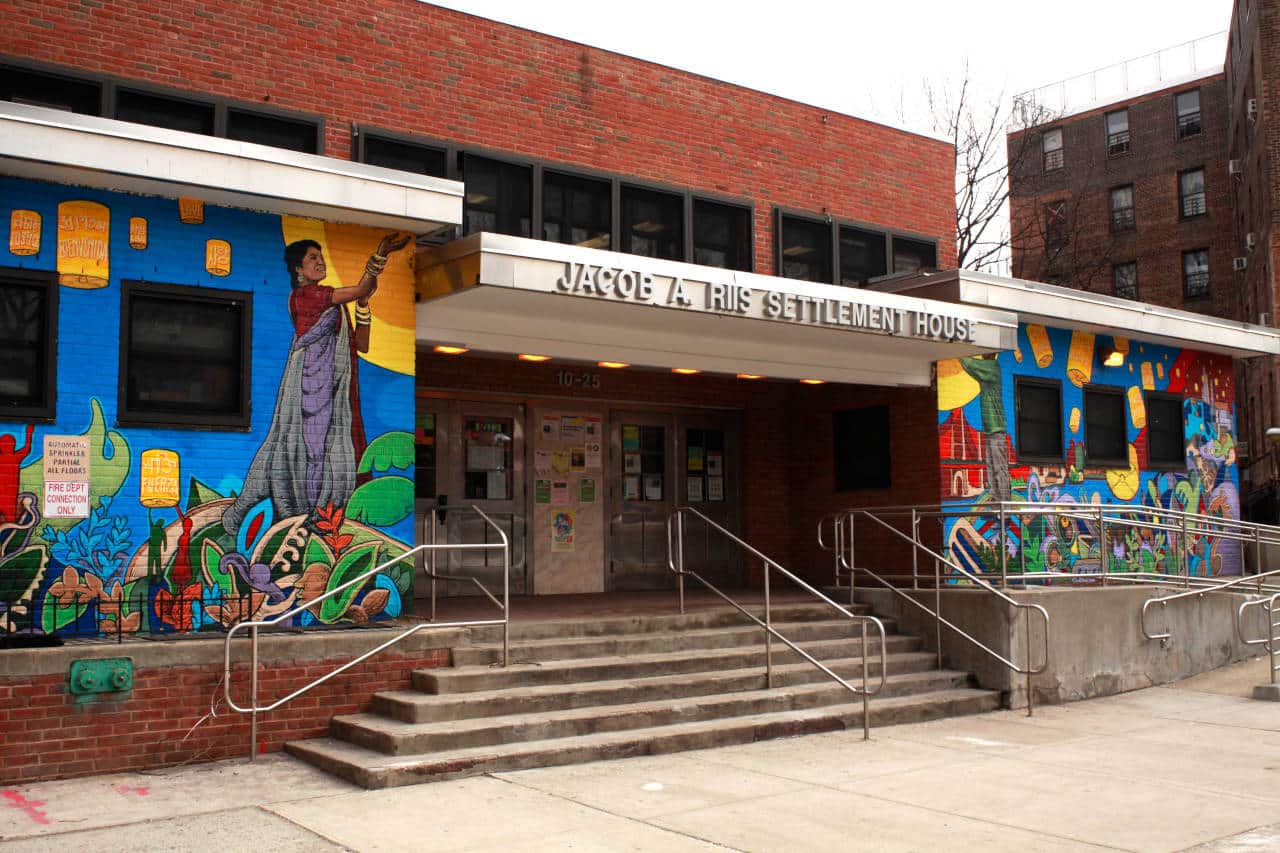For more than a century, settlement houses have provided a welcoming place where community members have the opportunity to participate in services and activities, including education, housing, health care, employment opportunities, recreation, and the arts, to improve their lives.
The settlement house movement began in London in the late 1800’s when educated wealthy students of Oxford and Cambridge universities began to settle in poverty-stricken neighborhoods, living and working with the poor to help them improve their quality of life.
In the late 19th century, the population of Manhattan’s Lower East Side swelled with thousands of immigrants. As they settled, moved into tenement buildings, established organizations, and built churches and synagogues, these immigrants were confronted with the urban problems of poverty, hunger, disease, crime, and housing. The first settlement house in New York City was established in 1886, and several more, including Riis Settlement House, were created over the next decade. By the end of the century, there were more than 100 settlement houses nationwide offering local residents access to educational, recreational and arts programs.
The settlement house staff often resided in the same buildings in which neighborhood residents participated in programs and activities. Living in close proximity, settlement staff regarded the people who used the settlement as neighbors not clients.
American settlement house leaders united in 1911 to establish the National Federation of Settlements and Neighborhood Centers of America. Now known as the United Neighborhood Centers of America (UNCA), the national organization has a membership of 160 settlement houses in 20 states.
In 1919 United Neighborhood Houses of New York (UNH) was founded to unify the settlement houses’ collective efforts to achieve social reform and to provide a voice for New York’s low-income residents.
Today, settlements are still community-focused organizations, providing a range of services including early education, youth guidance and crime intervention, senior programs, and specialized programs for young people. Since professional employees and students staff the houses, they no longer require employees to live alongside those they serve.
Although times have changed, the commitment to the strengthening underserved communities remains a hallmark of the settlement house.

